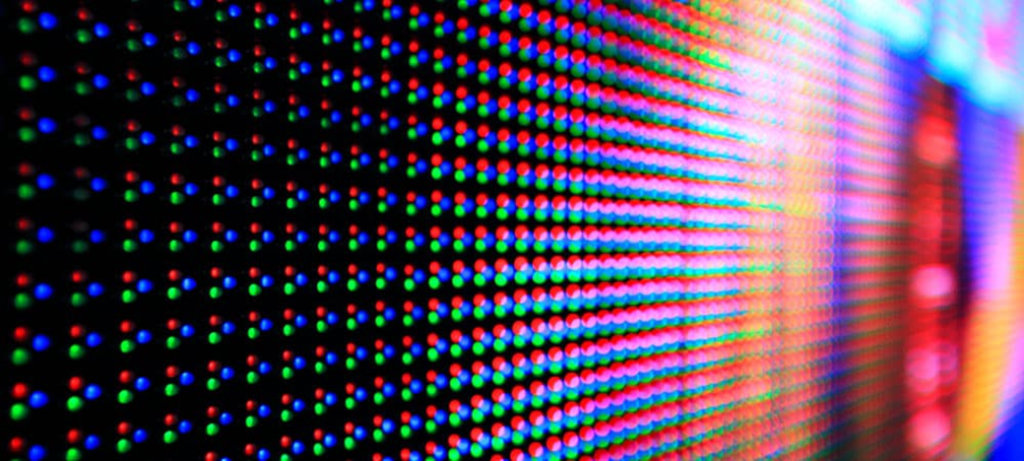
How Do You Compare LCD vs. LED Screens?
For all the exciting and high-quality display screens that we’ve been lucky to see and use over the past 10 years, the level of technological evolution and innovation we’ve been fortunate to be a part of, there is one thing a lot of people want an answer to.
Which is better – an LED screen or an LCD unit? With all the different types of display technologies out there, from UHD to OLED, this is a battle that has been fought for quite some time.
We’ve decided to dive into the matter a bit comprehensively, giving you a complete picture of the differences between LED and LCD screens, how they’re used across multiple consumer electric products such as smartphones, laptops, etc., and whether one is better than the other.
1. Understanding the Meaning of LCD in a Nutshell
LCD is short for “liquid crystal display”. The technology essentially comprises a simple production of flat display screens that were predominantly used in personal computers, laptops, a mobile phones in the 90s and throughout the 2000s.
LCD displays were created to provide a maximum level of superior resolution images and were essentially introduced as a time-efficient and effective alternative to CRT displays (cathode-ray tube).
However, other high-resolution screen technologies, mainly LEDs (light-emitting diodes) have taken over and a lot of screen-based consumer electronic products such as monitors, screens, laptops, smartphones, etc., come with LED displays.
However, LCDs are still in production and several modern laptops, computer monitors, and smartphone screens also come in LCDs. The technology was launched by the RCA Laboratories located in New Jersey back in 1964.
Six years later, we saw the rise of TN technology (twisted-nematic) which helped manufacturers to use LCD screens in a variety of applications back then, such as calculators and watches.
But it was in 1988, that the Japanese technology company, Sharp, launched the first-ever LCD complete color and motion LCD screen. It was a catalyst for the LCD revolution and several top-notch companies such as Hitachi and Sony started manufacturing high-quality LCD TVs and PC monitors.

2. Understanding The Meaning of LED in a Nutshell
LED is short for “light-emitting diode”. It too is manufactured as a flat panel display that consists of numerous tiny light-emitting bulbs that provide sharper contrast, brilliant visual experience, and far more pixels.
Thanks to their quality display, LEDs are also used for a variety of other commercial applications, such as for brand billboards or signage posts. Contemporary PC screens boast a combination of LED and LCD technology to provide brighter and sharper displays irrespective of ambient light conditions.
LEDs are made with a semiconductor element that comprises a mixture of electrons that continuously produce light energy in the form of photons. This is the major difference between an LED and a liquid crystal display screen.
You’d also be delighted to know that LED screens and monitors provide a tone of impressive benefits in contrast to their incandescent counterparts. Some of the main ones include energy efficiency, prolonged display durability, versatility, availability in numerous sizes, and fast switching.
In addition, you’d also be surprised to know that the diode system in an LED display unit is purposely designed to be tight knit. This enables the screen to produce even sharper luminosity and thus beautiful image displays.
Moreover, when you talk about high-definition image displays in LED units, manufacturers use varying degrees of additive color mixing, which produces an immersive display that has mesmerizing color depth, combining different types of light colors.

3. LED vs. LCD: Is There A Simple Answer to Which Technology is Better?
Before we can give you an answer, it’s fair to first analyze the different characteristics and features of each technology. This is going to give you a better idea of what to opt for as what’s optimal for you may be based upon your preferences.
So without further ado, here are some distinguishing attributes of both LED and LCD screens and what makes them each unique in their own way.
Less Power Consumption and Energy Efficiency
In terms of low power consumption and better overall energy efficiency, LEDs take the cake. Why? Well, LED screens and monitors are built-in with light-emitting diodes in contrast to fluorescent bulbs that are found in LCD units.
The former is a better technology, providing greater performance at low energy. A good example is the fact that a 32-inch LED television is designed to take less power (up to 10 watts less) compared to an LCD television of the same dimensions. So if you’re all about sustainability and saving on your utility bills, we would recommend going with an LED TV or monitor.
The Dimensions
When you talk about sleekness and bigger size, here again, LED is a clear winner. The main reason why this is true is because light-emitting diodes are very small and considerably thicker than the bulbs found in an LCD unit.
In addition, LEDs are neatly packed together in a straight line resulting in a thinner look in contrast to an LCD TV. This is why LED screens will also be thinner no matter how big they are compared to LCD TVs.
So, if you’re looking for an aesthetically pleasing look and a significantly larger display, you can’t go wrong with an LED screen.
Visual Experience and Angle
A slight disadvantage caused by LED displays (especially those that come with edge-lit lights) is that they don’t provide a good viewing angle in contrast to an LCD. That’s because of the direct positioning of the emitted lights. It can cause a bit of a weird viewing angle.
An LCD TV, on the other hand, comes with an evenly distributed light source for a better and more uninterrupted viewing experience.
Color Switch Response Time
This essentially refers to how fast colors can switch with each other, which is typically calculated in milliseconds. When it comes to fast response times, LED TVs are a clear winner thanks to their thick diodes and better color display, producing high-quality videos.
Image Contrast
Another important factor that makes LED screens and monitors better than LCDs is their color contrast. LEDs are designed to provide users with a full-color display with LED backlighting in comparison to an LCD, which has just one backlight sheet.
Plus, LED backlighting produces RGB colors (red, blue, and green) while LCD screen backlight screens can only produce two colors (white and black). So when it comes to sharper image contrast and viewing experience, LED screens and monitors are the clear winners.

4. The Longevity Factor: Which is More Durable, LED or LCD?
Thanks to the continuous advancement and innovation in display screen and monitor technology, newer and more efficient components make display units more versatile and durable. However, if you’re going to specifically talk about LCD vs. LED in terms of longevity, then LED is the clear winner.
How? Well, that’s because LED display units come with durable diodes that are much thicker and longer lasting, giving users a total lifespan of up to or more than 100,000 hours.
In contrast, LCD TVs only come with a 50,000-hour lifespan.
Eye Comfortability Factor
One of the best benefits of LED monitors and TVs is the fact that users can choose to automatically or manually dim the backlight. This provides a more comfortable viewing experience while reducing any eye strain. Plus, there is no compromise on the picture quality.
Is Maintenance Simpler or Difficult?
In terms of maintenance affordability and simplicity, LED TVs are the clear winner. That is because LED diodes can be easily and individually replaced when damaged.
The same cannot be said for LCDs because they’re installed with fluorescent bulbs, and if damaged, each bulb will need to be replaced, which can be costly.
Affordability
Because LED technology is a more recent innovation in display screens, they will generally cost more than your standard or average LCD screen or TV. However, if you look at the value factor and longevity, LED TVs will provide you with more value over time.

5. Become a Pioneering Force in the LED Display Technology Industry
A manufacturer and retailer of some of the world’s most cutting-edge LED display units and accessories, LEDSINO has been pioneering the display technology sector for more than 10 years. With a varying and highly innovative collection of some of the most sophisticated indoor and outdoor LED display products and accessories, LEDSINO offers unparalleled after-sale support and event installation processes.
In addition, the company also offers rental LED screens in various shapes and sizes with dedicated products in terms of their applications. For instance, they have separate display products for indoor vs. outdoor events.
We offer powerful and sophisticated display products for things such as gaming events, marketing seminars, exhibitions, concerts, musical performances, religious events, house parties, home theaters, and much more!
So there you have it, a breakdown of what LED and LCD screens are, why LEDs are better than LCD screens, and some reasons you should opt for LED TVs or monitors for longevity and more value for money.